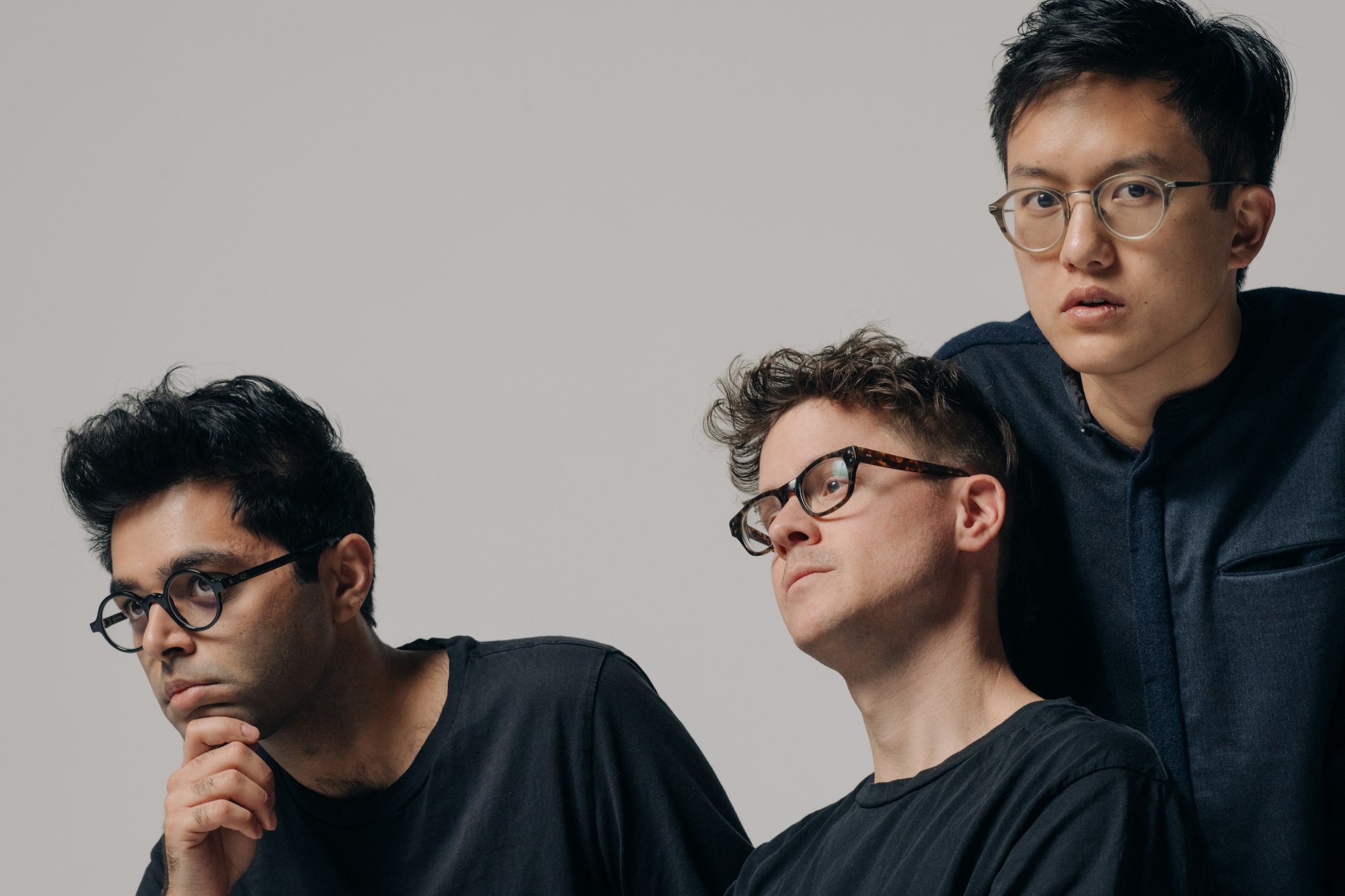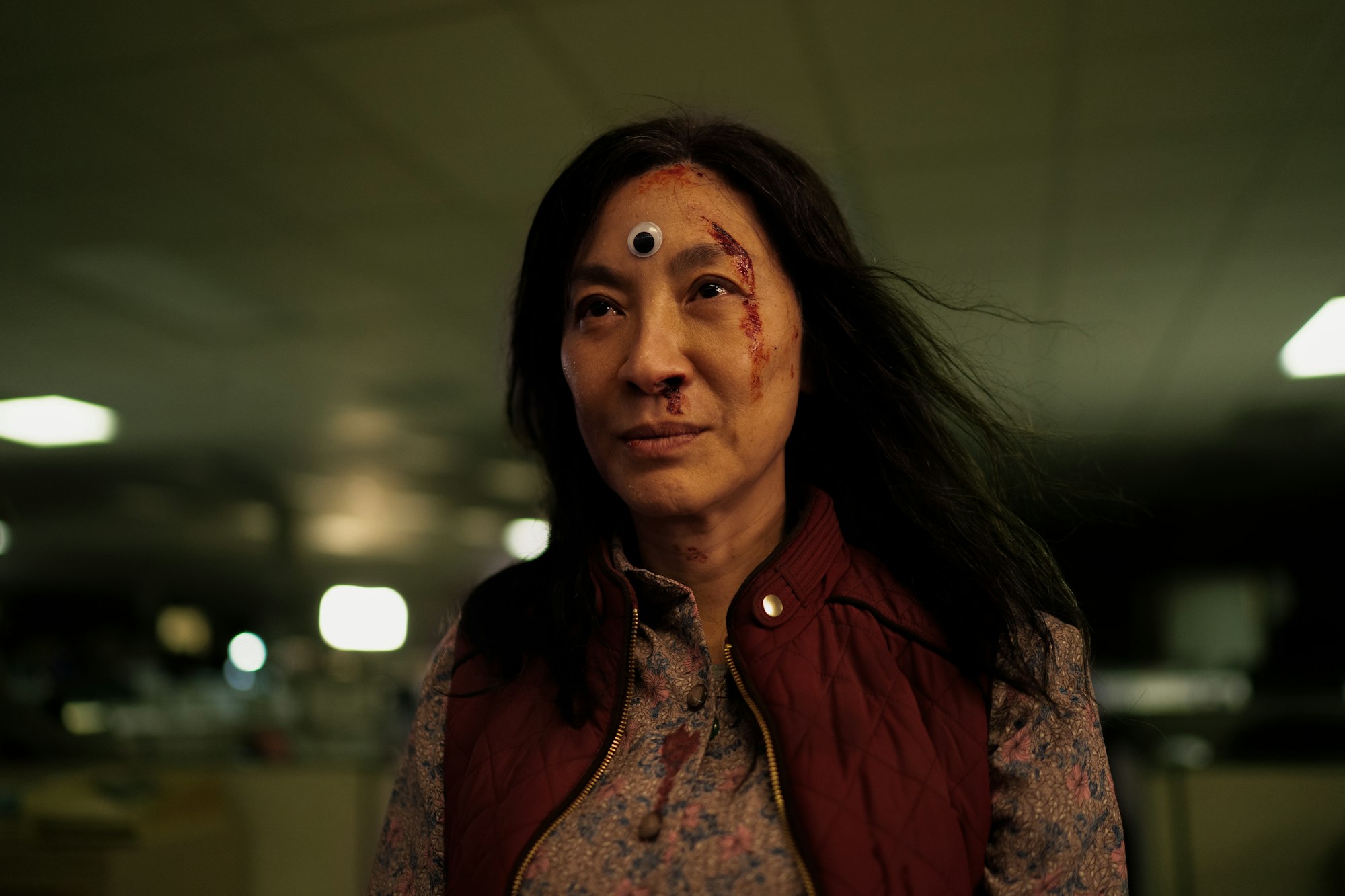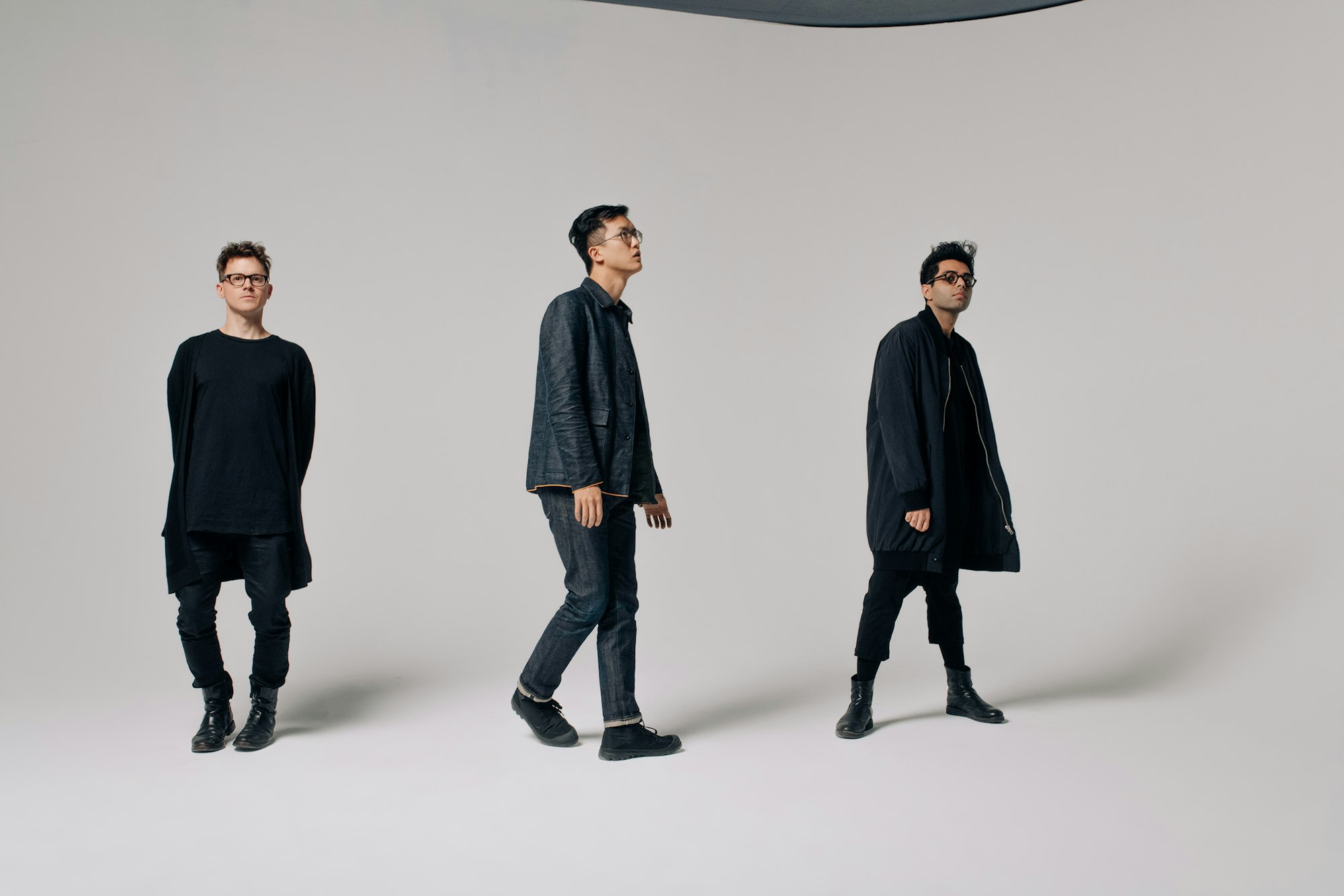Words by Anton Spice
Watching Everything Everywhere All At Once is a bit like being hurled backwards through an amusement arcade in a spinning teacup. Or being sprayed in the face with a confetti gun full of marshmallows. Or being sucked into the eternal void of a vast, shimmering bagel. To be honest, it’s a bit like a lot of things, none of which really get close to what it’s really like. As Chinese American laundromat owners Evelyn and Waymond Wang battled their way through the multiverse while trying to reconnect with their daughter Joy, save their marriage, and humanity at large, I held on to one line: “It’s going to be hard to explain any of this to you.”
Dreamed up by director duo Daniel Kwan and Daniel Scheinert, known simply as Daniels, this story of metaphysics and reconciliation relishes the inexplicable. How did life turn out like this? Why are taxes so boring, marriages so frustrating, and relationships with the ones we love so painful? Why don’t we have hotdogs for fingers? Drowning in receipts, Evelyn is searching for answers at the IRS, only to find herself spun out into a frenzy of parallel universes, each with its own unique constellation of matter, its own outlandish challenges. Amid the tornado of images, I stopped trying to look for meaning and just let the film reveal itself instead.
One of the most striking things about Everything Everywhere All At Once is the near-complete coverage of sound. For a film pushing 140 minutes, this feels like a huge undertaking, not least because Son Lux - the trio of Ryan Lott, Ian Chang, and Rafiq Bhatia - had never scored a film as a group before. On paper, it’s even more impressive. Two-and-a-half years of composing, recording, editing and re-editing have yielded a 49-track album, 100 film cues, and almost two hours of original music. Then there’s the duet between Mitski and David Byrne, a raccoon voiced by Randy Newman, and a flute-playing André 3000. Did Son Lux have any idea what they were letting themselves in for? Ryan laughs. “Yes! I’m so glad you get it. Leading with this question you obviously realise how absolutely absurd the workload was!”
Having started life as Ryan’s solo project in 2008, it feels as though Son Lux has been building to this moment. All baroque electronics, brittle vocals and a post-rock predilection for grand sonic gestures, Ryan had released three albums and a soundtrack for The Disappearance of Eleanor Rigby by the time members of his touring band, drummer Ian and guitarist Rafiq joined to make Son Lux a trio. Two more albums followed, as did Tomorrows, a three-part series of austere beauty, white light and black rock, rooted in layers of haunting electro-acoustic samples.
Daniels are very musical with how they construct their edits. I got very into creating very specific tempo maps that make sure that things fit together.
That all three members of the band could bring their own musical ideas to the table not only chimed with the themes of Everything Everywhere All At Once, but also its formal requirements. In the multiverse, Son Lux could be both singular and infinite. Prismatic is a word they use several times over the course of the interview. “There are parallels to what happens to the characters in the movie in terms of drawing on the skills from different versions of themselves to coexist in one way,” Ian explains. “It really felt like that happened to us as a band.”
That may be because the music in Everything Everywhere All At Once is so tightly enmeshed with the visuals that it’s sometimes hard to distinguish whether the soundtrack is responding to the story or leading it. “Daniels had the insight early on that one of the jobs of the score was that it needed to communicate a very specific feeling of a very specific universe in a very short amount of time,” Ryan says. Every time Evelyn verse jumps, as it’s called, she is thrown into both another version of herself and another arrangement of not-quite-normal life. In one universe she is a famous celebrity, in another a chef in cahoots with a singing raccoon.

As the film surges on, the soundtrack acts as its glue, calling upon familiarity amid the inexplicably strange. To hear a snippet of Debussy’s ‘Clair De Lune’ tethers Evelyn to some semblance of recognisable reality. When Waymond finds himself channelling Kung Fu Hustle to fight off an army of beefcake security guards in the auditor’s lobby, the music slips into boss level video game mode. “I’m really into finding the flow and rhythms of these fight scenes,” Ian explains, referencing the directors’ history of making music videos. “Daniels are very musical with how they construct their edits. How everything is shot, everything has a musical flow. I got very into creating very specific tempo maps that make sure that things fit together.”
I offer opera as another reference point, in part because of the sheer scale of the work. The band are happy to run with it. “We had to lean into genre, idiom, orchestration and instrumentation,” Ryan says. “But damn, we couldn’t just do that! That is why ultimately this was such a wonderful gig for us because it wasn’t us being other people. It was us being us, but maybe the versions of us that exist in other universes.”
A universe that it’s safe to Son Lux has rarely inhabited is comedy. “For all of the things we’ve explored together and individually, there isn’t a lot of humour in any of our music,” Rafiq says, with deadpan timing. “I think what really saved us is that all three of us are just extremely silly, and were willing to go with the ridiculous turns that this project took.”
He refers to the first of those turns as “the hotdog hands musical”, which will mean something to those who have seen the film, and is best left unexplained for those who haven’t. Ryan elaborates: “In a way, it was a perfect primer because we had to embrace absurdity, we had to embrace the potential that there are things we’ve never done before, that we have no precedent for making, and then just find a way.”
This movie was such a gift because it really felt like so many of our creative urges, both ones we knew about and ones we had suppressed, could be nurtured in this process.
There is of course a difference between making comedy music, and making music with comic potential. “I think the Daniels had a really important insight for us early on which was that in 9 cases out of 10, the music’s role is to earnestly and sincerely believe in the thing that’s being parodied,” Rafiq explains. What an act of creative genius to commission a band known for sincerity to score a film that errs so irreverently into the surreal. “We are not making fun of the characters, we are absolutely in there with them,” Ryan continues. “We are also not trying to help the emotion, this isn’t a movie that needed our help in that.” The humour and the pathos exist instead in that tension between the mundane and the absurd, between the tax office and the multiverse.
Because, if it wasn’t already abundantly clear, Everything Everywhere All At Once is not just one thing, and neither is the soundtrack. “This film required not just bespoke music but also bespoke instruments,” Ryan continues. With additional time afforded by the pandemic, the band custom-designed sample-based contact instruments to unsettle the very fabric of the score. What you thought might be a synthesiser is actually a pitched down, de-reverberated baritone guitar. Rafiq points to the cellos that “dive and then surge back up, pendulum-like, in the opposite direction.” Amid what can feel like the complete space-time anarchy of a million micro-cuts, Son Lux has considered every sound.

A significant part of this sonic palette is heard in the use of traditional paigu drums and gongs, that gesture sparingly towards the Wang family’s Chinese heritage. “Besides from I would say two moments in the movie, we were actively not trying to make things sound Chinese in a traditional way,” Ian explains. “I don’t think it’s true to the immigrant experience”. Those moments where they do join Evelyn in reflecting on the life she could have lived. “It’s something I’ve asked myself as well, as someone who was born and raised in Hong Kong and who moved to the States when I was 14,” Ian continues. “Just like, what would my life be like if I’d never left? Who would I be? I think it’s something that every immigrant asks themselves and this movie drew on that in a very explicit way.”
Rafiq agrees. “As somebody who was the first generation of my family who was born in the United States and grew up here, I’ve always seen people speak about what that experience means as a fusion or something. As though my existence simultaneously as a person of South Asian descent and my experience as an American couldn’t possibly be reconciled into one thing that’s unified and coherent as an identity.”
Music has the potential to hold competing narratives and histories in place and in doing so express a creative potential stifled by the imposed binaries of social relations. “For me,” Rafiq says, “music has always been a form of therapy because it’s a way of allowing different things to cohere in a way that feels like a personal and honest experience.”
In hinting at different influences, in manipulating and reframing sound, the score does that work for the film too. “When we talk about hybridising and all this sort of stuff, it’s not just from the vantage point of meeting the requirements of the individual universes of the characters,” Rafiq continues. “But really what we’re seeing in Joy and Evelyn is this tension in what it means to be Asian and American at once, and what that means for someone who came here versus someone who was born into this place and had to negotiate it in a different way. I’ve never seen a film that portrays Asian Americans in a way that is fully revealing of, let alone celebrating, that hybridity and how prismatic that experience is.”
For all multiverses, hotdog hands and seeing-eye bagels, the commonality which Everything Everywhere All At Once reveals is one of supreme quantum empathy. Slow and sudden miracles unfold. To do battle with taxes, marriages and intergenerational relationships, all you really need is love.
I think what really saved us is that all three of us are just extremely silly, and were willing to go with the ridiculous turns that this project took.
Film theme ‘This Is A Life’ plays as the credits roll. “After a movie like this, it feels like you just want something beautiful and serene and melancholic, but also just a relief,” Ryan says. His dream for the song was to engage Mitski and David Byrne in singing two different songs that ultimately converge towards resolution. The journey to this point has been disorientating, intense and strangely transformative.
Not least, it seems, for the soundtrack’s final collaborator, Outkast’s André 3000, aka André Benjamin. The only in-person session of the whole project, André turned up at Stones Throw Studios in LA with 15 hand-carved wooden flutes of varying descriptions. André had been practising for years but had never heard himself play in a studio environment before. “Watching André go on whatever journey it was he underwent during that process was almost as magical as the treasure trove of sonic ingredients that came from that session,” Rafiq observes. If this film can change André Benjamin, it can change anyone.

As our interview draws to a close, I sense in Son Lux more than just pride in the work that they’ve produced. Somewhere along the road towards those 100 film cues Everything Everywhere All At Once worked its way into Ryan, Ian and Rafiq’s collective unconscious. They speak a little like people who have experienced the mind-expanding epiphanies of an ayahuasca ceremony.
“I think we gave ourselves permission to be broader versions of ourselves that we had previously,” Ryan concludes. “This movie was such a gift because it really felt like so many of our creative urges, both ones we knew about and ones we had maybe suppressed, could be nurtured in this process. I think that transcends a job, it transcends a gig, and fuses with the beautiful spirit of life itself. I know that in a lot of ways we’ve changed and we’ll never be the same.”
Son Lux left a piece of themselves in this soundtrack and took something else in return. I don’t think they’d begrudge me for saying that tears were shed, just moments before returning to a conversation about a fanny-pack wielding nunchuck master. Universes of the absurd and the profound are so closely aligned, that sometimes all you can do is cry. Or laugh. Or both, at the same time, all at once.
